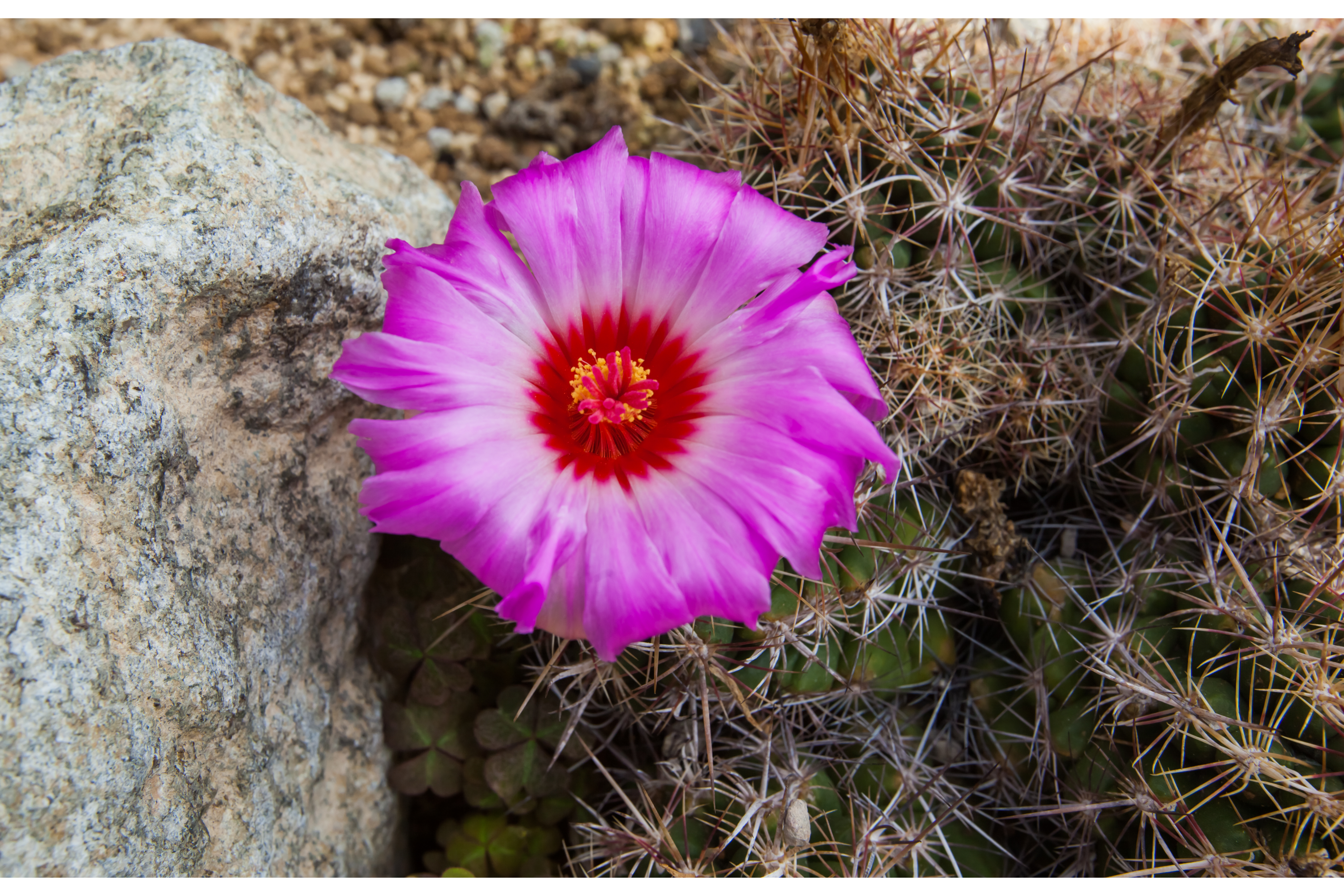Bi-colored fishhook cactus
(Thelocactus bicolor)

Description
Thelocactus bicolor, commonly known as the bi-colored fishhook cactus, is a small, slow-growing cactus that is native to Mexico. It is a member of the Cactaceae family, which is a diverse family of plants that includes over 2,000 species. Description Thelocactus bicolor is a small cactus that typically grows to a height of 5 to 6 inches (12 to 15 cm) and a diameter of 3 to 4 inches (7 to 10 cm). It has a globular shape, and the body of the plant is divided into several rounded segments. The plant has a greenish-gray color, with darker green vertical stripes that run along the sides of each segment. The plant's name comes from the fact that the upper portion of each segment has a different color than the lower portion, creating a bi-colored effect. The upper portion of the segment is usually dark green, while the lower portion is a lighter, bluish-green color. The plant's most distinctive feature is its spines, which are thin and hair-like. The spines are typically white or cream-colored and grow in clusters on the upper portion of the plant's segments. The spines are very flexible, and they are not as sharp or rigid as the spines of other cactus species. Habitat Thelocactus bicolor is native to Mexico, where it has a relatively limited range. It is found in the states of San Luis Potosi, Hidalgo, Queretaro, and Guanajuato, which are located in central and eastern Mexico. Within its range, Thelocactus bicolor typically grows in rocky or sandy soils in semi-arid or arid regions. It is adapted to living in hot, dry conditions and can tolerate extreme temperatures. The plant is often found growing in open grasslands, rocky hillsides, and scrublands, and it can sometimes be found growing in association with other cactus and succulent species. Cultivation Thelocactus bicolor is a relatively easy cactus to cultivate and is often grown for its unique appearance and small size. Here are some tips on how to cultivate this plant: Soil: Thelocactus bicolor requires well-draining soil that is low in organic matter. A cactus-specific soil mix or a mixture of sand and perlite can be used. Light: This plant requires ample sunlight to thrive. Place it in a location that receives at least 4-6 hours of direct sunlight per day. Water: Thelocactus bicolor should be watered sparingly, allowing the soil to dry out between watering. During the winter months, the plant should be kept dry and protected from frost. Temperature: This plant is adapted to living in hot, dry conditions and can tolerate extreme temperatures. However, it is best to keep the plant above freezing temperatures and to avoid exposing it to temperatures below 40°F (4°C). Fertilizer: Thelocactus bicolor does not require regular fertilization. If desired, a diluted cactus fertilizer can be applied during the growing season. Potting: When potting Thelocactus bicolor, use a pot that is only slightly larger than the plant's root system. This will help prevent the soil from becoming waterlogged, which can lead to root rot. Propagation: Thelocactus bicolor can be propagated by seed or by division. Propagation by seed: To propagate Thelocactus bicolor by seed, follow these steps: Sow the seeds in the spring, using a well-draining cactus soil mix. Plant the seeds just below the surface of the soil. Keep the soil moist but not waterlogged until the seeds germinate, which usually takes 2-3 weeks. Once the seedlings have emerged, gradually reduce watering to prevent them from becoming too moist. Allow the seedlings to grow for a few months before transplanting them into individual pots. Propagation by division: To propagate Thelocactus bicolor by division, follow these steps: Carefully remove the plant from its pot. Gently separate the segments, making sure to keep the roots intact. Allow the segments to dry for a few days in a shaded area. Plant the segments in a well-draining cactus soil mix. Water the segments sparingly, allowing the soil to dry out between watering. Propagation by division is typically more successful than propagation by seed, as it ensures that the new plant will have the same characteristics as the parent plant. However, both methods can be effective, and the choice of method will depend on the grower's preferences and available resources. Uses Thelocactus bicolor is primarily grown for ornamental purposes and is commonly used in cactus and succulent gardens. Its unique appearance, with a bi-colored body and flexible white spines, makes it an attractive addition to any collection. In addition to its ornamental value, the spines of Thelocactus bicolor have been used in traditional medicine to treat various ailments, including fever and inflammation. The plant's roots and stem have also been used in traditional medicine, but their efficacy and safety have not been extensively studied. Overall, Thelocactus bicolor is primarily grown for its aesthetic appeal and is not commonly used for medicinal purposes. However, as with any plant that is used for medicinal purposes, it is important to use caution and consult with a healthcare professional before using Thelocactus bicolor or any other plant for medicinal purposes. Conservation Status Thelocactus bicolor is not currently listed as a threatened species, but its populations are declining due to habitat loss and over-collection. As a result, the plant is protected under the Convention on International Trade in Endangered Species of Wild Fauna and Flora (CITES), which regulates the international trade of endangered species. Conclusion Thelocactus bicolor is a unique and fascinating cactus species that is prized for its distinctive appearance and ease of cultivation. As with all plant species, it is important to protect and conserve Thelocactus bicolor to ensure its survival for future generations.
Taxonomic tree:







